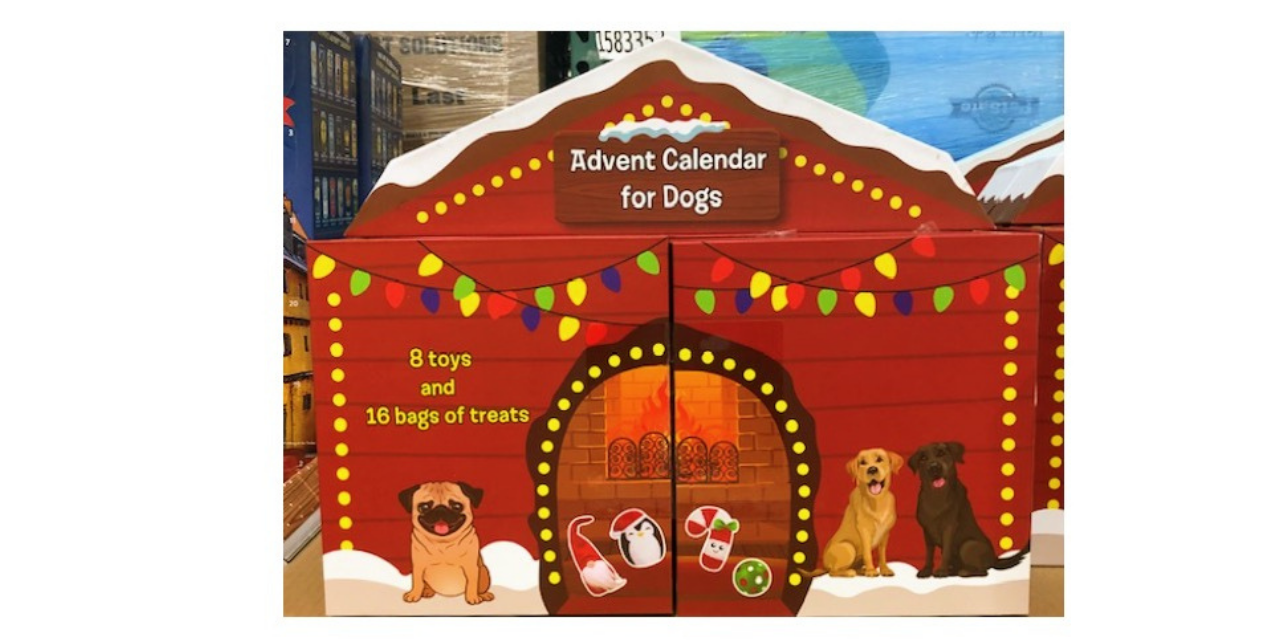According to recent reports, Americans will spend upwards of $100 billion on their pets this year – with the average family forking out close to $100 per month.
Like anything else, there’s a broad spectrum of tastes and tolerance for what’s worth it and what’s not for pet owners. While some may spare no expense on luxuries for the family dog or cat, many prove decidedly more frugal and practical.
I did a double take this past weekend walking into our local Costco here in Colorado Springs, Colo., when I spied a large and colorful display selling “Advent Calendars for Dogs.”
The price tag?
$35.99.
Of course, our Great Dane celebrates Christmas with us each year, usually with a stocking on the fireplace filled with biscuits or a rawhide bone. Shadow is part of the family. But I have to admit, I never thought of including him in our Advent traditions, which include scripture readings and the weekly lighting of a wreath on our dining room table for the four Sundays leading up to Christmas.
The calendar in Costco includes edible treats, a cotton rope and various balls – with each item emerging from behind a numbered window on a daily basis.
By the look of shopping carts around the store, this ecclesiastical canine calendar seemed to be a big hit.
“Isn’t this cute?” said one woman to her nodding husband, who dutifully placed it in their cart.
I wouldn’t be surprised if Costco was sold out by next weekend, long before Advent begins on Sunday November 28th.
Advent is believed to date back to sometime between 300 and 500 AD. According to Ryan Reeves, writing for the Gospel Coalition:
Unlike modern Advent ceremonies, most celebrations of Advent in history had a twin focus. The Latin word adventus was the translation of the Greek Parousia—a word used for both the coming of Christ in human flesh and his Second Coming. Advent, then, always tended to focus on both.
For the first two weeks of Advent, the church would reflect on the Second Coming. Disciples would chasten their hearts, confess sins, and spend time hoping for the quick coming of the Lord. The last two weeks of Advent would then transition to focus on the first parousia, Christ in the manger.
It took almost 1500 years for printed Advent calendars to emerge, a milestone attributed to a German named Gerhard Lang. He began selling them commercially in 1908. Numerous designs followed, often used to highlight sacred art. A popular tool for parents to help children both anticipate and prepare for the coming Christmas season with prayer and scripture reading, they eventually became a worldwide phenomenon.
How did we go from the sacred to the secular in a century? Costco’s 2021 version isn’t the first or only one for dogs. Over the years, calendars of all types have spring up featuring chocolate and other little gifts.
But what would the early Church Fathers think about leveraging a sacred liturgical season like Advent to sell a calendar for dogs?
Believers can and do disagree on nonessentials of the Christian faith all the time, and the wisdom or whimsy of Advent calendars would seem to fall into this category.
Perhaps some families will use the calendar as a teaching tool for their children. Or maybe I’m being overly optimistic.
But even as a bonafide dog lover myself, I think I’ll take a pass on this one.






